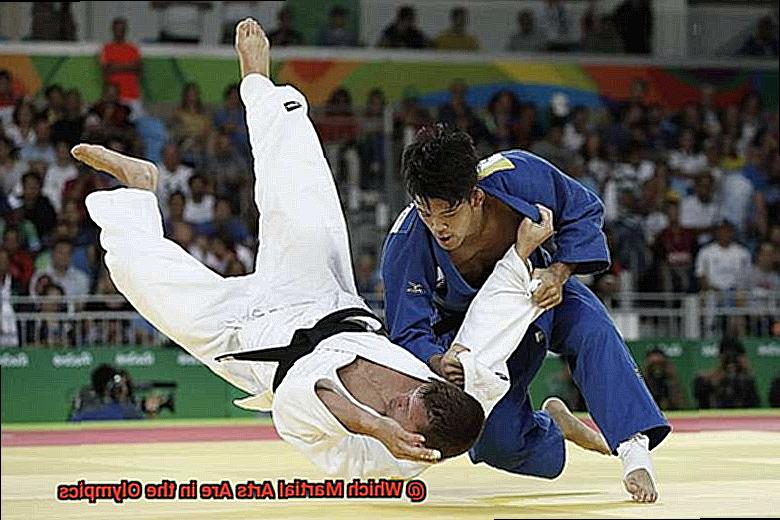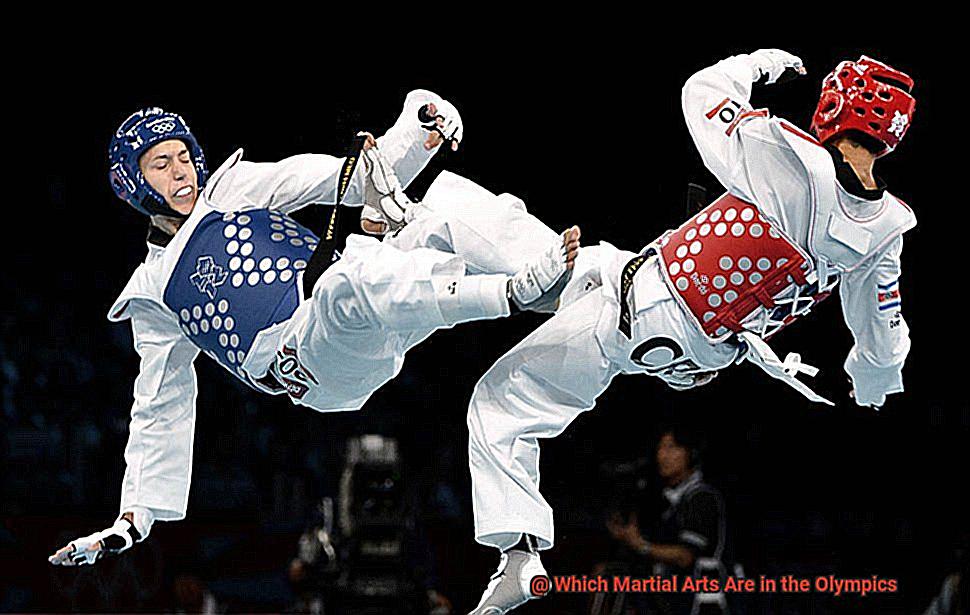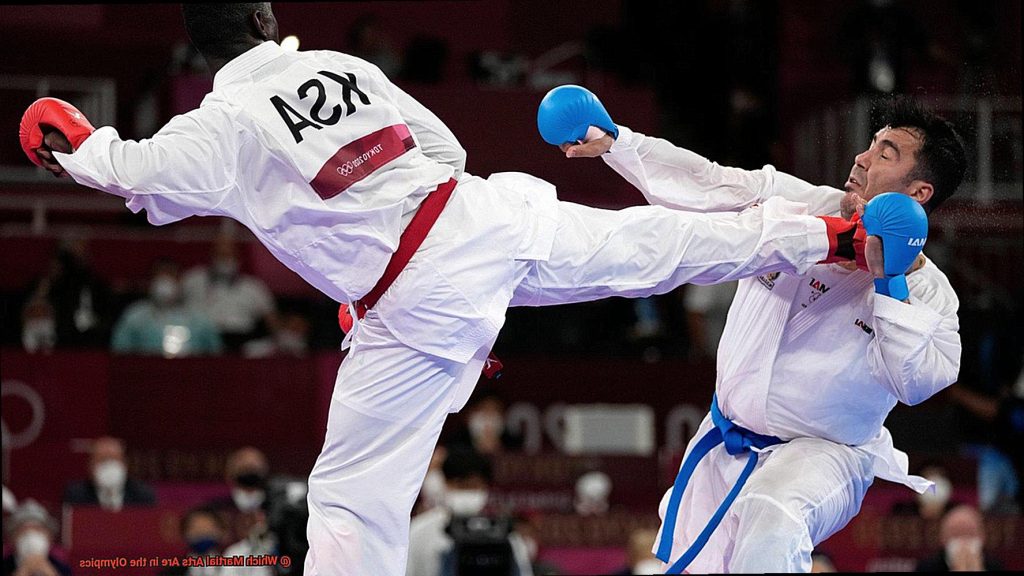For centuries, martial arts have been an integral part of cultures worldwide. From the lightning-fast movements of Taekwondo to the bone-crunching strikes of Boxing, these disciplines have captivated audiences of all ages. But did you know that some martial arts have made it onto the Olympic stage? That’s right. The modern Olympics has given martial artists a chance to showcase their skills on a global scale.
The Olympics is a celebration of athletic excellence, and martial arts have become a significant part of this spectacle. If you’re curious about which martial arts feature in the Olympics and want to learn more about them, then look no further.
In this blog post, we’ll explore the martial arts that have earned their place in the Olympic games, delving into their origins and the unique rules and regulations governing each one. Whether you’re a die-hard fan or simply interested in how combat sports have evolved over time, this article is perfect for you. So fasten your seatbelts and get ready to immerse yourself in the thrilling world of martial arts at the Olympics.
What Are Martial Arts
Martial arts are more than just a way to throw a punch or kick. They are combat practices that have evolved over centuries, with the core principles of physical fitness, mental discipline, and self-defense skills. The word “martial” comes from the Latin word “Mars,” which means the Roman god of war.
Now, martial arts are widely recognized as a sport and form of exercise that promote not only physical fitness but also mental agility and emotional balance.
Originating in Asia, martial arts have different categories based on their style and origin, including popular ones like Karate, Judo, Taekwondo, Boxing, Wrestling, and Kung Fu. Each style has its unique set of techniques, training methods, and philosophies.

For example, Judo is a Japanese martial art that focuses on using an opponent’s momentum against them through throws and grappling techniques. In contrast, Taekwondo is a Korean martial art that emphasizes lightning-fast kicks, punches, and blocks.
People practice martial arts for various reasons. Some do it for practical self-defense skills while others do it as an enjoyable form of exercise or sport. Martial arts competitions are held globally where athletes compete against each other to showcase their skills and techniques. The Olympics is one such platform where martial arts athletes from around the world come together to compete for medals.
Currently, two martial arts are part of the Olympic games – Judo and Taekwondo. These two styles require different skill sets and techniques but share the common goal of achieving victory through physical prowess and mental discipline. Judo emphasizes using an opponent’s strength against them while Taekwondo focuses on speed and agility.
So, martial arts have a rich history and continue to be a popular sport and form of exercise today. Understanding the different styles and their purposes is essential in appreciating the beauty and complexity of martial arts.
History of Martial Arts in the Olympics
Although the inclusion of martial arts in the Olympics has a relatively short history, it has made a significant impact. The first demonstration event was held in Tokyo, Japan, in 1964, showcasing the traditional Japanese martial art of Judo. It was a resounding success, and Judo quickly gained popularity, becoming a mainstay at every modern Olympic Games since then.
Wrestling, another ancient combat practice with roots in ancient Greece, was reintroduced to the Olympic program in 1896 after being absent for over a millennium. It has since become one of the most popular Olympic sports and is also considered a martial art due to its emphasis on grappling and ground fighting.
In 1988, taekwondo, a Korean martial art that focuses on high kicks and fast strikes, was introduced as a full medal sport at the Seoul Olympics. Since then, it has gained popularity around the world and has become a staple at the Olympics.
These traditional martial arts have not only enriched the Games with their ancient combat practices but have also contributed significantly to their diversity and excitement.
They have brought together athletes from different cultures and showcased their physical prowess, mental discipline, and self-defense skills. Moreover, they have promoted global participation, unity, and peace through sport.
In conclusion, while the history of martial arts in the Olympics may be relatively short, its impact is significant. Judo, wrestling, and taekwondo have all become popular Olympic sports and have played an essential role in promoting diversity and global unity.
Judo: A Japanese Martial Art
Judo, the renowned Japanese martial art, has taken the world by storm with its emphasis on grappling techniques and the use of leverage and timing to overcome an opponent. Developed in the late 19th century by Jigoro Kano, judo became an Olympic sport in 1964 when the Summer Olympics were held in Tokyo, Japan.
The unique philosophy underlying judo has contributed to its popularity worldwide. Practitioners not only learn self-defense, but also cultivate mutual respect, personal development, physical fitness, and mental toughness. Regular practice of judo has been reported to positively impact practitioners’ overall well-being, helping them feel more balanced and centered.
At the Olympic level, judo has produced some of the most notable athletes from around the world. Japan’s Yasuhiro Yamashita won gold medals in 1984 and 1988, while France’s Teddy Riner has won gold medals in 2012, 2016, and 2020. These athletes have showcased their physical prowess, mental discipline, and self-defense skills while promoting peace through sport.
In Olympic judo matches, there are seven weight categories for both men and women. Players can win by either throwing their opponent onto their back or holding them on the ground for a certain amount of time. Penalties are also given for actions such as grabbing an opponent’s leg or using excessive force.
Judo is considered one of the most popular martial arts in the world, with millions of people practicing it regularly. Its growth in popularity can be attributed to its unique philosophy, emphasis on personal development, and exciting competitive matches at both amateur and professional levels.
So, judo is a fascinating Japanese martial art that has become an Olympic sport since 196Its philosophy emphasizes mutual respect, personal development, physical fitness, and self-defense. Judo has produced remarkable athletes from around the world while promoting peace through sport.
Taekwondo: A Korean Martial Art
Today, we’ll be delving into the fascinating world of Taekwondo, a Korean martial art that boasts dynamic and powerful kicking techniques. With its inclusion in the Olympic Games since 2000, it has become one of the most popular martial arts seen on the global stage.
Originally developed as a means of self-defense and physical training by Korea’s ancient warrior class, Taekwondo has evolved into a modern form since the 1950s and 1960s. This evolution has helped Taekwondo become a popular martial art around the world.
Taekwondo competitions are divided into four weight categories each for men and women. During these competitions, athletes score points by striking their opponent with kicks or punches to the head or torso. While the use of hands is allowed, kicks are emphasized, and high-scoring techniques involve complex spinning kicks and jumping techniques.
The intensity of Taekwondo competition is undeniable, with athletes from around the world vying for a chance at Olympic glory. The current format involves a single-elimination tournament where only one athlete can advance to the next round. This fierce competition culminates in a gold medalist being declared in each weight category.

In conclusion, Taekwondo’s journey from its ancient origins to becoming an Olympic sport is nothing short of remarkable. Its worldwide recognition as a dynamic and powerful martial art is well-deserved, with its popularity only continuing to grow. Whether you’re a seasoned practitioner or just starting on your martial arts journey, Taekwondo offers something for everyone.
Other Martial Arts at the Olympics in the Past
First up, we have wrestling. Dating back to the ancient games in Greece, wrestling was actually one of the original Olympic sports. It has been a part of every modern Olympic games except for 1900.
While there have been some controversies surrounding wrestling’s inclusion in recent years, it was eventually reinstated for the 2020 Tokyo games after much public outrage and lobbying efforts by various wrestling organizations.
Wrestling requires incredible strength, agility, and technique, making it an intense and thrilling martial art to watch.
Next on our list is fencing. While it may not seem like a traditional martial art, fencing is certainly a combat sport that requires skill and strategy.
Fencing has been a part of the modern Olympic games since their inception in 1896 and includes three different disciplines: foil, epee, and sabre. Fencers must use their speed and precision to score points by striking their opponent with their weapon.
Despite not involving physical contact like other martial arts, fencing is still a thrilling sport to watch due to its strategic gameplay.
Finally, we have archery. While it may not involve hand-to-hand combat like many of the other martial arts on this list, archery requires precision, focus, and mental toughness. Archery was actually an Olympic sport in ancient times as well, dating back to the ancient games in Greece.
Archers must aim for a target and hit it with accuracy to score points. It may be a more peaceful martial art compared to others on this list, but it still requires immense skill and concentration.
In conclusion, while these martial arts may not be as well-known or popular as some of the others on this list, they have all played an important role in the history of the Olympic games. From wrestling’s ancient roots to fencing’s strategic gameplay to archery’s precision and focus, these martial arts are all worthy of recognition and appreciation.
Comparison of Judo and Taekwondo
One of the primary differences between Judo and Taekwondo is how they score points. Judo matches are won through throwing an opponent onto their back or pinning them to the ground for a set amount of time.
In contrast, Taekwondo matches are won by scoring points with powerful kicks and strikes to an opponent’s body or head. Both sports require different types of physical strength and agility, highlighting the unique skill sets of each practitioner.
Another difference between the two martial arts is the use of protective gear. Taekwondo practitioners typically wear headgear, chest protectors, and shin guards to minimize injury during sparring sessions and competitions.
However, in Judo, practitioners typically do not wear protective gear aside from their judogi (uniform) and belt. This highlights the importance of proper technique, control, and respect for opponents in Judo.
Despite these differences, both Judo and Taekwondo require discipline, focus, and physical strength. They also share similarities in their emphasis on respect for opponents and the importance of proper technique. Practitioners of both martial arts must be dedicated to their training and possess a strong sense of perseverance to master their techniques.
In terms of Olympic success, both Judo and Taekwondo have produced numerous medalists for their respective countries. Japan has been particularly dominant in Judo, winning multiple gold medals in each Olympic Games since the sport’s inclusion in 196Similarly, South Korea has been successful in Taekwondo, with their athletes winning numerous gold medals since the sport’s debut in 2000.
While Judo and Taekwondo may have their differences, they both showcase the skill and athleticism of their practitioners on the Olympic stage. These two martial arts offer exciting opportunities for competition and personal growth, whether you prefer throwing opponents to the ground or delivering powerful kicks and strikes.
8_2rvik7NrY” >
Conclusion
In conclusion, martial arts have become an integral part of the Olympic Games. They offer a global platform for athletes to showcase their skills and compete against each other in various sporting disciplines. Currently, Judo and Taekwondo are the only two martial arts included in the Olympic program. However, wrestling, fencing, and archery have also played important roles in the history of the event.
Judo is a Japanese martial art that emphasizes leverage and timing to overcome opponents through throws and grappling techniques. Taekwondo is a Korean martial art that focuses on powerful kicks and strikes. Both sports require different types of physical strength and agility while emphasizing respect for opponents and proper technique.
The Olympic Games promotes unity, friendship, and peace through sport while showcasing the physical prowess, mental discipline, and self-defense skills of its participants. It brings together athletes from all over the world to compete against each other at the highest level.






